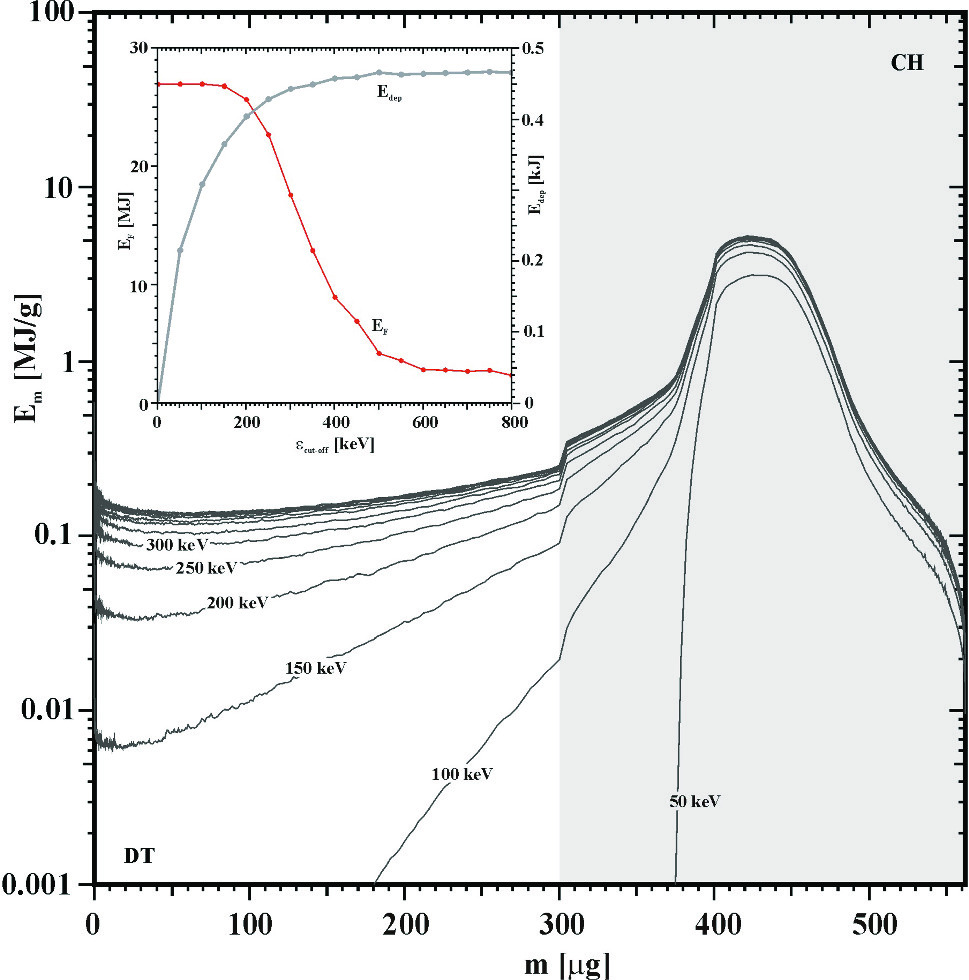https://doi.org/10.1140/epjd/s10053-021-00309-y
Regular Article – Plasma Physics
Effect of hot-electron energy distribution in the thermonuclear burn degradation in Directly-Driven Inertial Confinement Fusion
1
École Normale Supérieure Paris-Saclay, Centre Borelli UMR 9010, 4 avenue des Sciences, 91190, Gif sur Yvette, France
2
CEA, DAM, DIF, 91297, Arpajon, France
3
Université Paris-Saclay, CEA, LMCE, 91680, Bruyères-le-Châtel, France
4
ETSI Aeronáutica y del Espacio, Universidad Politécnica de Madrid, 28040, Madrid, Spain
Received:
5
July
2021
Accepted:
9
November
2021
Published online:
29
November
2021
In direct-drive inertial confinement fusion implosion, the absorption of the laser light with the plasma corona can be affected by laser-plasma instabilities. Among them, the two-plasmon-decay instability converts part of the laser energy in accelerated electrons and reduces the incoming laser power. These electrons propagate and deposit their energy providing undesired fuel preheating that increases the fuel adiabat and makes it difficult to compress which negatively affects the capsule performance. Hydrodynamic numerical calculations of a direct-drive capsule that include a Monte Carlo package to account for the propagation of the hot-electrons have been performed. It turned out that the effect on the implosion depends on the kind of the electron energy distributions. Here, exponential and Maxwellian energy distributions have been considered and it is shown that Maxwellian distribution induces stronger preheating of the fuel than the exponential and makes more difficult the reach of the ignition condition and thermonuclear burn wave propagation. It is also found that hot-electrons with kinetic energies greater than 200 keV are primarily responsible of the degradation of the output fusion energy.
© The Author(s), under exclusive licence to EDP Sciences, SIF and Springer-Verlag GmbH Germany, part of Springer Nature 2021





